Today Old Parliament House on North Terrace is dwarfed by the imposing grey edifice of the new Parliament House adjacent to the east. Yet it remains a site of political and architectural significance. Old Parliament House is associated with democratic reforms in which South Australia led the way, including the introduction of full adult male suffrage in its lower house in 1856. The building incorporates the work of three important colonial architects: William Bennett Hays, Edward Angus Hamilton and Edward John Woods. It is one of only a handful of government buildings constructed before 1860 remaining in Adelaide.
The 1843 building
From 1836 to 1843 South Australia was administered by a Legislative Council made up of the governor and four appointed public officials, which met privately in a sitting room at Government House. The decision to build a Legislative Council Chamber was made after the British Parliament increased the Legislative Council to seven nominated men and the governor, and enabled the public to witness proceedings.
Jacob Pitman began construction of the first Council Chamber on the current site in July 1843. It was completed in time for the inaugural session of the new legislature on 10 October. The Observer reported on 14 October 1843 that ‘the chamber, which with the gallery is calculated to contain about 200 persons, was crowded to the doors by ladies and gentlemen of the first respectability’.
In truth the 1843 building was a very simple and very small brick box. It consisted of a single hall measuring just 10m long by 6.1m wide and 5.2m high, with a gallery capable of holding 50 members of the public and seats reserved for reporters. Daylight entered from two semi-circular windows in the southern wall and a skylight in the slate roof.
The limited budget of £200, as much as cost-cutting Governor Grey would permit, was evident in the finished product. The Observer noted on 3 September 1843 that the chamber did not compare favourably with significant buildings nearby: ‘its position in contiguity with two large buildings (Government house [sic] and the Bank of South Australia) places the new Hall in invidious comparison with those noble specimens of Colonial architecture’.
The Legislative Council building of 1855
Under the authority of an Act of the British Parliament for the ‘Better Government of Her Majesty’s Australian Colonies’, the Legislative Council passed Ordinance No. 1 of 1851 to constitute a new council. Membership was increased to 24, with a speaker elected by the council. The governor was no longer a member but retained the right to nominate eight councillors. Adult males owning property worth £100 or more or paying rent of at least £10 per year – substantial sums in 1851 – were entitled to elect 16 members. To stand for election a man needed to be rich; owning property of at least £2000 or paying rent of at least £100 per year. These property qualifications ruled out two-thirds of South Australian males of voting age (over the age of 21 years).
The council held a design competition for a more substantial building to accommodate its expanded membership. Bennett Hays, then a clerk of works in the Colonial Engineer’s Department, won. He was subsequently appointed colonial architect on 1 January 1852. The building was to be situated on the southwest corner of Victoria Square, in accordance with Colonel William Light’s Plan which made the square the hub of government. However, construction was delayed by the dramatic impact of the Victorian gold rush in the early 1850s. South Australian males, in particular, were among the many people who flocked to the goldfields, creating labour shortages and high labour costs in their home colonies.
By the time the project was revived in 1853 the Legislative Council was aware that further alteration to the colony’s system of government was likely. A parliament of two houses was being discussed and the single chamber planned for Victoria Square would not suffice. Hays was asked to prepare plans and estimates for a ‘House of Assembly’ to accommodate two chambers; one of 36 members and the other of 12. Tenders were called but none would commit to either a fixed price or a fixed deadline given the uncertain times. An agreement was reached with the firm English & Brown: construction of a building with a single chamber adjoining the 1843 hall commenced in January 1854 and was completed in July 1855 at a cost of £17 550.
The contrasting red brick and white limestone façade of the 1855 Parliament House was Elizabethan in style. The limestone, which was the same as that used for Government House, the Adelaide Gaol and Holy Trinity Church, came from the government quarry near the River Torrens. The ground floor contained offices and a refreshment room with cellars beneath. A large parliamentary chamber was located on the first floor. The speaker’s chair, with a reporters’ gallery above, was placed at its western end. A strangers’ gallery was constructed at the eastern end. A ventilating turret provided air circulation and cooling. The speaker’s office, reading room and a library featuring a large bay window and panelled ceiling were located behind and to the east of the chamber.
The councillors moved from their cramped 1843 quarters to the upstairs chamber on 1 November 1855.
The bicameral Parliament House of 1857
The constitution which gave South Australia self-government and its first parliament received Royal Assent in June 1856. The constitution provided for two elected Houses of Parliament; a lower house or House of Assembly of 36 members and an upper house or Legislative Council of 18 members. The House of Assembly was elected by all males over the age of 21 years. Voting for the Legislative Council was restricted to men owning property worth £50, leasing property worth £20 or occupying property worth £25 per year.
Ideas for a larger facility for the parliament were debated through 1856 but there was no unanimity on the position of such a building. The tenders called on 20 December 1856 were for minimal alterations to the structure on North Terrace. Oversight was provided by Colonial Architect Edward Angus Hamilton who had replaced Hays in 1856.
Contract builder IW Perryman completed a northern extension to the 1855 building, including a larger Legislative Council Chamber, in just 10 weeks – in time for the opening of the colony’s first bicameral parliament on 22 April 1857. Two walls of the 1843 chamber were incorporated into the extension; the remainder was demolished. The House of Assembly took over the chamber on the first floor.
Alterations and additions, 1856-75
Alterations and additions were subsequently made to what became ‘Old’ Parliament House. Between 1856 and 1858 a refreshment room, caretaker’s room, lean-to-shed and wash house were added to the small, increasingly congested site. A refreshment room of limestone was constructed east of the Legislative Council Chamber in 1861. In 1865 a library was built to the northwest of the chamber. The windows on the North Terrace frontage of the House of Assembly Chamber were extended and given rounded tops in 1868.
In 1872 South Australian legislation increased the House of Assembly by 10 members from 1875, reflecting the increased colonial population. It was decided that a completely new building was required to cater for an expanding parliament and a competition was held for its design. Architects Edmund Wright and Lloyd Taylor won with a design that would form the basis of ‘New’ Parliament House. However, disagreements over where this house should be located and concerns over costs led to its deferral.
In the meantime, Colonial Architect Edward John Woods oversaw further alterations to the old building. In 1875 it was extended to the west, providing an enlarged House of Assembly Chamber, staircase and rooms for officers. A new ventilation system was installed and two basement rooms were also added. The extension is clearly visible in the southwest façade because it was constructed of Mitcham sandstone rather than limestone as previously.
After 1889
The west wing was completed and occupied by the House of Assembly in 1889. The Legislative Council remained in its 1857 chamber, while the House of Assembly’s former chamber was converted to a library. An over-way was constructed linking the old and new buildings.
A few years later, in 1894, the Legislative Council exchanged places with the Parliamentary Library. It returned to the old Council Chamber in 1909, remaining until it was relocated to the east wing of ‘New’ Parliament House in 1939.
Following the completion of the new Parliament House, Premier Thomas Playford proposed that the old complex be demolished. It was saved by the onset of the Second World War and its use as a Royal Australian Air Force recruiting office. Thereafter it was used by government departments. Further modifications and alterations continued through to the 1970s, including the demolition of a gallery and the removal of the slate roof in 1967. By the mid 1970s the complex was sadly rundown and neglected.
The Constitutional Museum and reclamation by Parliament
In the late 1970s Old Parliament House was restored to reflect, as closely as possible, its 1875 condition and was converted to the Constitutional Museum, Australia’s first political museum. The museum operated under that name from 1979, and came under the direction of the History Trust of South Australia following the introduction of the History Trust of South Australia Bill in 1981 and establishment in 1982. It was later referred to as Old Parliament House from 1986 until 1995, when the building reverted to use by the parliament, largely as offices and committee rooms.


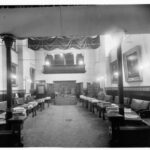

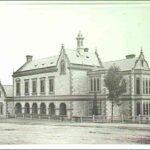
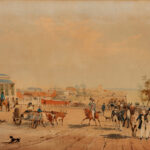
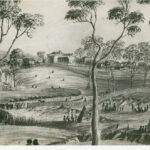
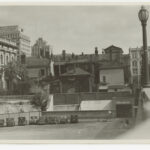
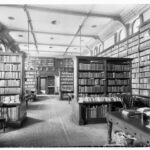

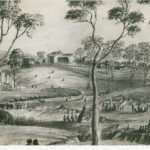
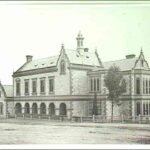
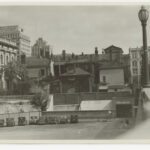
Comments